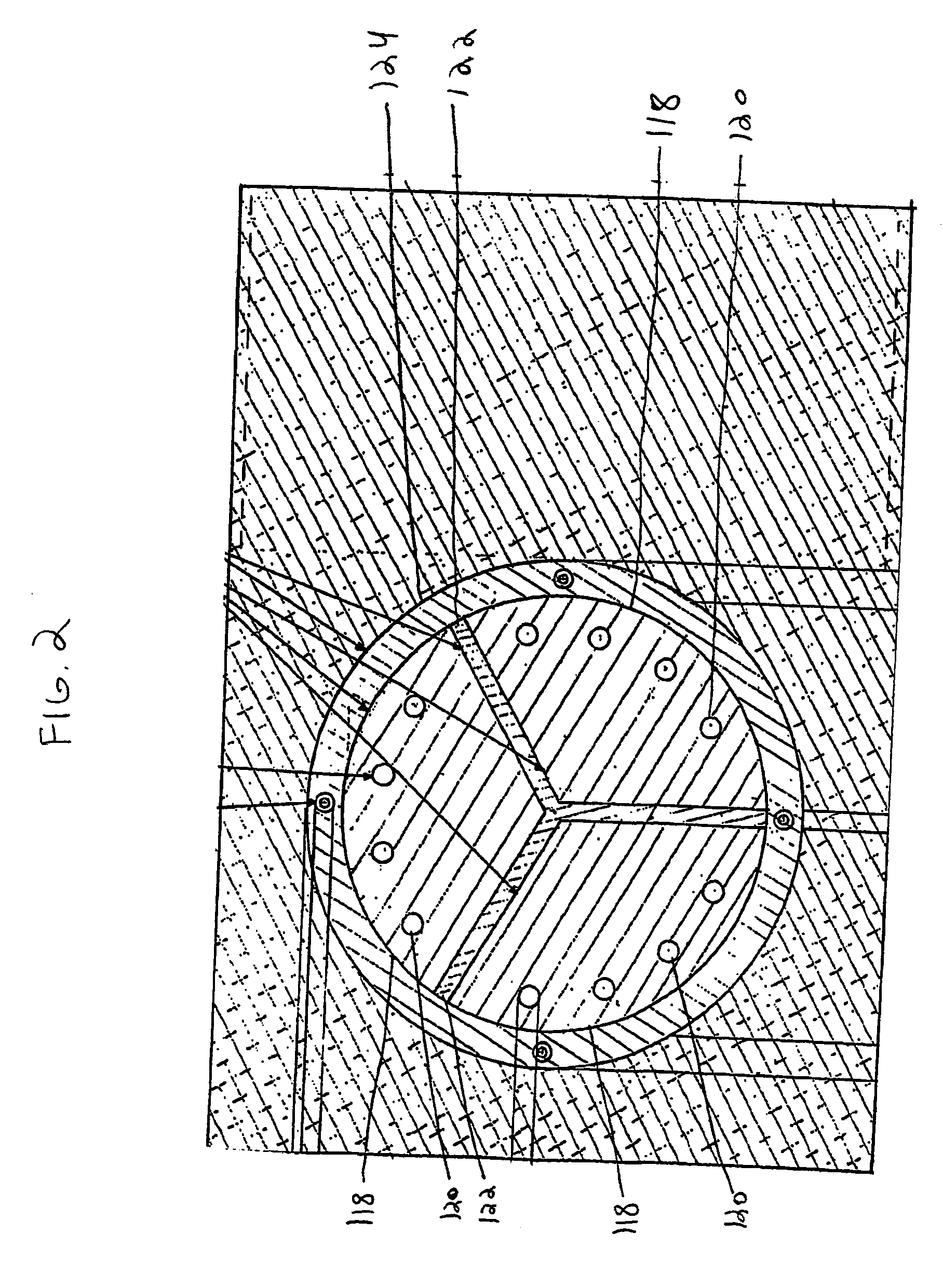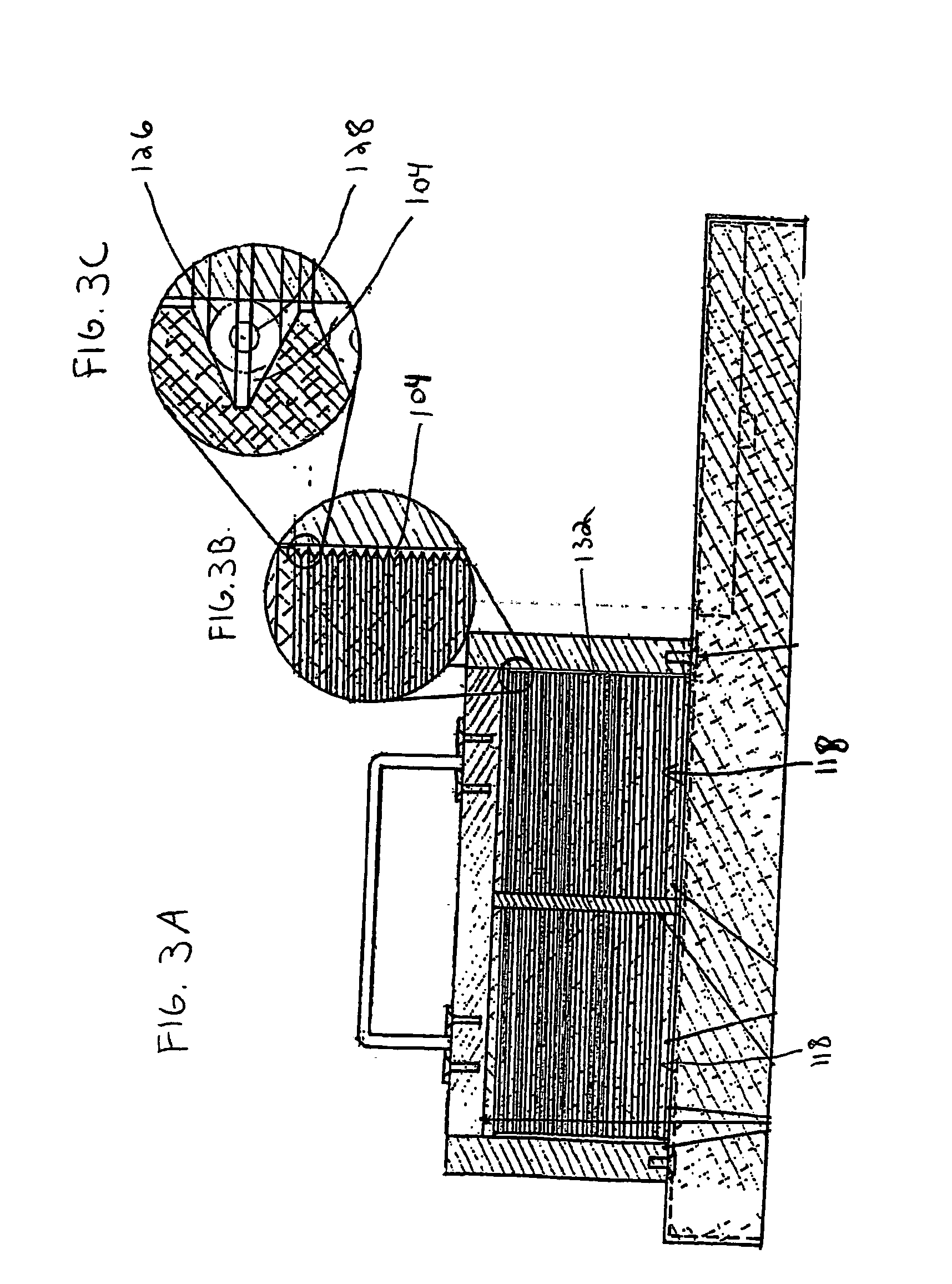Apparatus and method for a continuous rapid thermal cycle system
a rapid thermal cycle and apparatus technology, applied in the direction of specific use bioreactors/fermenters, enzymology, after-treatment of biomass, etc., can solve the problems of inability to easily and quickly adapt devices, inconvenient production of mass quantities of dna, and inconvenient production of devices, etc., to achieve easy adaptability to different pcr reactions, low cost, and efficient
- Summary
- Abstract
- Description
- Claims
- Application Information
AI Technical Summary
Benefits of technology
Problems solved by technology
Method used
Image
Examples
example
[0044]A sample was prepared containing: 12% MgCl2 (25 mM), 0.33% Taq DNA polymerase (5 units / μl), 2.0% dNTP's (deoxyadenosine triphosphate (dATP), deoxycytidine triphosphate (dCTP), deoxyguanosine triphosphate (dGTP) and deoxythymidine triphosphate (dTTP)), 8.0% template (2 μg / ml), 61.66% Pluronic F108 solution (1.5% solution), 4% forward primer, 4% reverse primer, 8% reaction buffer (10× concentration). The solution can be scaled up to the correct volume using these figures. The twelve vertical sectors 118 of the cylindrical temperature control body 102 were heated to three different temperatures, four adjacent sectors 118 were heated to 95° C., another four adjacent sectors 118 were heated to 59° C., and the final four adjacent sectors 118 were heated to 72° C. 1 / 32″ ID, 1 / 16″ OD TEFLON PTFE tubing was wrapped around the temperature control body 102 thirty times to subject the length of tubing 126 and reaction mixture to the three different temperatures thirty different times in s...
PUM
| Property | Measurement | Unit |
|---|---|---|
| concentration | aaaaa | aaaaa |
| temperatures | aaaaa | aaaaa |
| temperatures | aaaaa | aaaaa |
Abstract
Description
Claims
Application Information
 Login to View More
Login to View More - R&D
- Intellectual Property
- Life Sciences
- Materials
- Tech Scout
- Unparalleled Data Quality
- Higher Quality Content
- 60% Fewer Hallucinations
Browse by: Latest US Patents, China's latest patents, Technical Efficacy Thesaurus, Application Domain, Technology Topic, Popular Technical Reports.
© 2025 PatSnap. All rights reserved.Legal|Privacy policy|Modern Slavery Act Transparency Statement|Sitemap|About US| Contact US: help@patsnap.com



